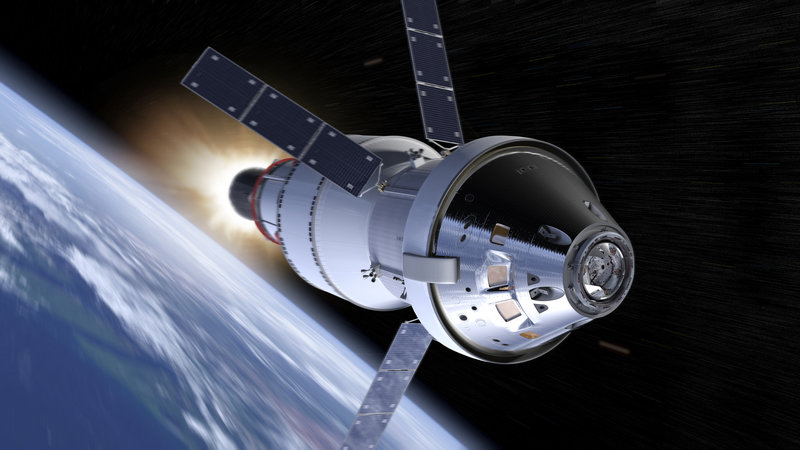Space exploration has always been humanity’s bold leap into the unknown, driven by an insatiable curiosity to uncover the universe’s secrets. From the first grainy images of the Moon to rovers traversing Mars, technology has been the backbone of every cosmic milestone. This article dives deep into how cutting-edge innovations propel us farther into the cosmos, blending awe-inspiring discoveries with practical advancements that shape life on Earth. Let’s embark on a journey through the tech that makes the impossible possible, with a sprinkle of humor and a lot of heart.
Why Technology is the Heartbeat of Space Exploration
Imagine trying to navigate the stars with just a compass and a dream—it wouldn’t end well. Technology is the engine that powers space missions, turning science fiction into reality. From rockets that defy gravity to AI that sifts through cosmic data, every leap into space relies on tools that push human ingenuity to its limits. Without these advancements, we’d still be stargazing from our backyards, wondering what’s out there.
The Evolution of Space Tech: From Sputnik to Starship
The journey began with Sputnik’s iconic beep in 1957, a simple satellite that proved we could reach beyond Earth. Today, reusable rockets like SpaceX’s Starship are slashing costs and making space more accessible. This evolution showcases how technology builds on itself, each innovation paving the way for bolder missions. It’s like upgrading from a flip phone to a smartphone—except the stakes are interstellar.
The Role of Collaboration in Tech Development
Space tech isn’t born in a vacuum (pun intended). Governments, private companies, and universities collaborate to push boundaries. For example, NASA’s partnership with SpaceX has revolutionized crewed missions, while international efforts like the James Webb Space Telescope unite global expertise. These collaborations prove that teamwork makes the cosmic dream work.
Rocketry: The Gateway to the Stars
Rockets are the unsung heroes of space exploration, carrying humanity’s hopes into orbit and beyond. Without them, we’d be stuck on Earth, dreaming of the stars. Modern advancements have made rockets more powerful, efficient, and—most excitingly—reusable, opening doors to a new era of exploration.
Reusable Rockets: A Game-Changer for Accessibility
SpaceX’s Falcon 9 lands like a sci-fi movie prop, proving rockets can be reused like airplanes. This slashes launch costs, making space travel more affordable. In 2024 alone, SpaceX completed over 100 successful launches, many reusing the same boosters. It’s like recycling, but way cooler—and it’s saving millions.
Next-Gen Propulsion: Beyond Chemical Rockets
Traditional chemical rockets are reaching their limits. Enter ion thrusters, nuclear propulsion, and solar sails—technologies that promise faster, more efficient travel. NASA’s X3 ion thruster, for instance, could cut Mars travel time significantly. These innovations are like swapping a bicycle for a jetpack for deep-space missions.
Comparing Propulsion Technologies
| Technology | Speed | Efficiency | Use Case |
|---|---|---|---|
| Chemical Rockets | High | Low | Earth orbit, Moon |
| Ion Thrusters | Moderate | High | Deep space missions |
| Nuclear Propulsion | Very High | High | Mars and beyond |
| Solar Sails | Variable | Very High | Interstellar exploration |
Table: A comparison of propulsion technologies shaping the future of space travel.
Challenges in Rocketry Development
Building rockets isn’t easy—think of it as assembling a skyscraper that has to survive a fiery launch. Challenges like material durability and fuel efficiency persist, but advancements in 3D printing and lightweight composites are overcoming these hurdles. The result? Rockets that are stronger, lighter, and cheaper.
Robotics and AI: The Brains Behind the Mission
Robots and AI are the unsung heroes of space, doing the heavy lifting where humans can’t go. From rovers on Mars to algorithms crunching cosmic data, these technologies are our eyes, ears, and brains in the vastness of space.
Robotic Explorers: Paving the Way
Remember the heartwarming moment when NASA’s Perseverance rover landed on Mars in 2021, beaming back images of the Red Planet? Rovers like Perseverance and Curiosity collect data in environments too harsh for humans. They’re like the ultimate remote workers, tirelessly exploring alien worlds.
AI in Space: Making Sense of the Cosmos
AI is the genius behind the scenes, processing massive datasets from telescopes and probes. For example, the James Webb Space Telescope generates terabytes of data daily, and AI algorithms help identify patterns, like potential exoplanets. It’s like having a super-smart assistant who never sleeps.
Pros and Cons of AI in Space Exploration
- Pros:
- Processes vast amounts of data quickly.
- Enhances mission planning and anomaly detection.
- Enables autonomous decision-making in remote environments.
- Cons:
- High development costs.
- Potential for errors in untested scenarios.
- Limited by current computing power in space.
The Future of Robotics in Space
The next generation of robots will be even smarter, with enhanced autonomy and dexterity. Imagine rovers that can repair themselves or drones exploring Titan’s methane lakes. These advancements will make exploration more efficient, like upgrading from a Roomba to a full-on housekeeping bot.
Telescopes and Remote Sensing: Our Window to the Universe
Space telescopes like Hubble and James Webb have transformed our understanding of the cosmos, offering glimpses of distant galaxies and star-forming regions. These tools are our cosmic cameras, capturing images that inspire awe and drive scientific breakthroughs.
The Power of Space Telescopes
The James Webb Space Telescope, launched in 2021, revealed the Rho Ophiuchi cloud complex in stunning detail, showcasing stars being born 390 light-years away. These images aren’t just pretty—they provide data on cosmic phenomena, helping us understand the universe’s origins. It’s like getting a front-row seat to creation itself.
Remote Sensing: Mapping the Unknown
Remote sensing tech, like spectrometers on satellites, analyzes planetary atmospheres and surfaces. For instance, NASA’s MAVEN mission uses remote sensing to study Mars’ atmosphere, revealing clues about its past climate. This tech is like a cosmic detective, piecing together the universe’s mysteries.
Space-to-Earth Benefits: Technology That Transforms Lives
Space exploration isn’t just about the stars—it’s about improving life on Earth. Technologies developed for space missions often find their way into everyday applications, from GPS to medical imaging. It’s the ultimate win-win: we explore the cosmos and get cool gadgets in return.
Everyday Innovations from Space Tech
- GPS: Born from satellite navigation systems for space missions.
- Medical Imaging: CT and MRI tech owe their roots to space imaging advancements.
- Solar Panels: Space research improved solar cell efficiency, powering homes today.
- Weather Forecasting: Satellites provide real-time data for accurate predictions.
Economic Impacts of Space Tech
The space economy is booming, valued at over $450 billion in 2024 and projected to reach $1 trillion by 2030. Lower launch costs, thanks to reusable rockets, have opened opportunities for startups and smaller nations. It’s like the gold rush, but in orbit, with benefits trickling down to industries like telecommunications and agriculture.
The Role of Private Companies in Space Tech
Private companies like SpaceX, Blue Origin, and Rocket Lab are shaking up the space industry. They’re not just building rockets—they’re driving innovation at a breakneck pace, making space more accessible and sparking a new era of exploration.
SpaceX: Leading the Charge
SpaceX’s reusable rockets and Starlink satellites are redefining space access. Their Crew Dragon missions have carried astronauts to the ISS, proving private companies can compete with NASA. It’s like watching a startup outpace a tech giant—except the prize is the cosmos.
Emerging Players and Global Collaboration
Smaller companies like Rocket Lab are launching microsatellites, while nations like India and the UAE are investing heavily in space tech. This global race fosters innovation but also raises questions about regulation and cooperation. Can we all play nice in space? Time will tell.
Challenges and Ethical Considerations
Space exploration isn’t all starry-eyed wonder—it comes with challenges and ethical dilemmas. From space debris to the militarization of orbit, technology must evolve to address these issues responsibly.
Space Debris: A Growing Threat
With over 27,000 pieces of debris tracked in orbit, space is getting crowded. Collisions could cripple satellites or endanger missions. Solutions like debris-removal tech are critical to keeping space safe. It’s like cleaning up after a cosmic party that got out of hand.
Ethical Questions in Space Exploration
Who owns the Moon’s resources? Should we colonize Mars? These questions demand careful thought. Technology can take us to the stars, but ethics will decide how we behave once we get there. It’s a bit like moving to a new neighborhood—you want to be a good neighbor.
People Also Ask (PAA) Section
What is the role of technology in space exploration?
Technology enables every aspect of space exploration, from rockets that launch missions to AI that analyzes data. It’s the foundation for reaching new planets, studying distant stars, and bringing benefits back to Earth.
How has space technology improved life on Earth?
Space tech has given us GPS, advanced medical imaging, and better solar panels. These innovations, born from the demands of space, improve navigation, healthcare, and sustainability on Earth.
What are the latest advancements in space technology?
Reusable rockets, ion thrusters, and AI-driven data analysis are among the latest breakthroughs. These technologies make space travel cheaper, faster, and more insightful.
Where can I learn more about space exploration?
Check out NASA’s website (www.nasa.gov) for mission updates or SpaceX’s blog for private-sector insights. Universities like MIT and Caltech also offer free online courses on space tech.
What are the best tools for following space missions?
Apps like NASA’s official app or Starlink’s tracker provide real-time mission updates. For data analysis, tools like MATLAB or Python libraries are used by professionals to process space data.
The Future of Space Tech: What’s Next?
The future of space exploration is as thrilling as a sci-fi blockbuster. Technologies like quantum computing, advanced robotics, and even space-based solar power are on the horizon, promising to unlock new frontiers.
Quantum Computing in Space
Quantum computers could revolutionize mission planning and data processing, solving complex problems in seconds. NASA is already exploring quantum algorithms for optimizing spacecraft trajectories. It’s like upgrading from a calculator to a supercomputer.
Space-Based Solar Power
Imagine solar panels in orbit beaming clean energy to Earth. Japan’s JAXA is testing this tech, which could power entire cities sustainably. It’s a bold idea that could make fossil fuels a thing of the past.
Pros and Cons of Space-Based Solar Power
- Pros:
- Unlimited clean energy.
- No weather-related disruptions.
- Global energy access potential.
- Cons:
- High initial costs.
- Complex infrastructure requirements.
- Potential environmental impacts during launch.
FAQ Section
How does technology make space exploration possible?
Technology provides the tools—rockets, rovers, telescopes, and AI—to navigate, explore, and understand space. Without it, we couldn’t launch missions or process the data they collect.
Why is AI important in space exploration?
AI processes massive datasets, guides autonomous rovers, and optimizes mission plans. It’s like having a brilliant scientist working 24/7, ensuring no detail is missed.
Are there risks to relying on technology in space?
Yes, tech failures can jeopardize missions, and space debris poses a growing threat. Robust testing and innovative solutions, like debris removal, are critical to mitigate risks.
How can I get involved in space technology?
Study fields like aerospace engineering or computer science, or explore internships at NASA or SpaceX. Online platforms like Coursera also offer courses to kickstart your journey.
What’s the next big breakthrough in space tech?
Expect advancements in nuclear propulsion, quantum computing, and space-based solar power to redefine exploration, making missions faster, smarter, and more sustainable.
Conclusion: Embracing the Cosmic Journey
Space exploration is humanity’s greatest adventure, and technology is the fuel that keeps it going. From reusable rockets to AI-driven discoveries, each innovation brings us closer to the stars while improving life on Earth. As we stand on the cusp of a new era—think Mars colonies and interstellar probes—the spirit of innovation will guide us. So, let’s keep dreaming big, laughing at the occasional rocket mishap, and marveling at the tech that makes the cosmos our playground.
For more on space tech, visit NASA’s technology page or explore SpaceX’s mission updates. Want to dive deeper? Check out MIT’s free Aerospace Engineering courses.



